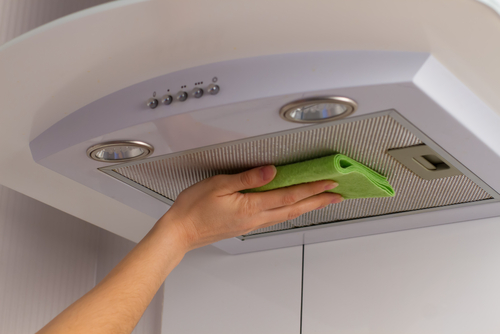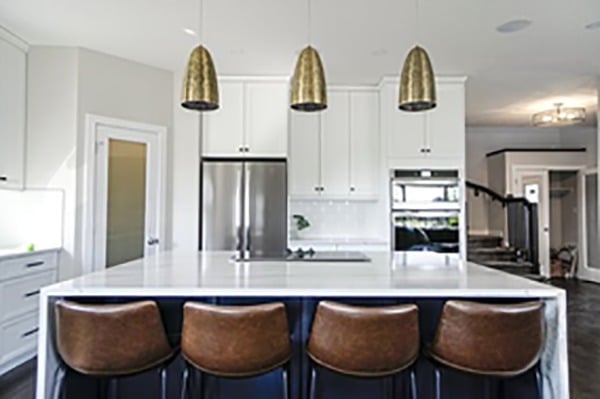How to Repair a Stove Burner Video
If you’re getting burned by a burner malfunction, here are some helpful troubleshooting tips and video on how to repair a burner on electric and gas stoves and cooktops:
When one of your kitchen stove or cooktop burners doesn’t work, you may be tempted to pick up the phone and call in professional help for repairs. But before you write that repair check, make sure it’s not a problem that you can fix yourself. Before working on any stove or cooktop, always unplug the appliance or disconnect power at the circuit breaker or fuse box. Don’t attempt any repair that you’re not completely comfortable with, and call a qualified repair professional if in doubt. Check the circuit breaker or fuse box if needed. For a gas stove, check the gas valve to make sure that it is open.
Troubleshoot and Repair an Electric Burner
- Check the burner coil. If an electric burner isn’t heating at all, a burner coil may be the problem. First, see if the coil is loose. When the burner coil is completely cool, reconnect it firmly into the burner socket. If that doesn’t work, pull the coil out from the socket and exchange it with another from the stove that you know for sure is working. Turn the burner back on, and if it works, then you need a new burner coil. If it still doesn’t work, you haven’t found the problem.
- Inspect the prongs on the burner coil. If the prongs look burned, inspect the socket. If the socket looks burned, too, it may need to be replaced. You can replace a bad burner block by disconnecting the terminal wires with a screwdriver and screwing in a replacement. See your unit’s manufacturer’s instructions for diagrams and additional instructions.
- Check for a faulty ignition switch. If you can’t control the heat level on a coil, you may have a faulty ignition switch that needs replacing. Switches cannot be repaired.
- Choose a pan that fits the diameter of the cooking element. If you have a flat (sometimes known as glass or ceramic) cooktop, and food isn’t heating evenly, you may have the wrong sized pan for the element.
- Your element could be on its off-cycle. If you don’t see the element on a flat cooktop light up during cooking, it just may be on it’s off cycle to maintain the maximum preset temperature. Wait a moment and see if it lights up.
Related: From Shoot to Troubleshoot: A Guide to Oven Maintenance
Successfully increased your home's value?
Sounds like a perfect time to find the warranty that fits you best.
Troubleshoot and Repair a Gas Burner
- Clean your burner holes. If the burners won’t light, you may need to clean the burner holes, which can get clogged with grease and cooking debris. Make sure the power is off and the elements are cooled, then clean the igniter at the base of the burner and the burner holes with a stiff brush, and clear the burner hole by inserting a toothpick or needle.
- Determine if you have an electronic ignition system or a pilot light or open burner. If your range clicks when the burner lights, it’s probably an electronic ignition system, which is most common today.
- To check the igniter, take the cooled burner grates off the stove. One at a time, turn on each burner knob to see if you hear a click. If you didn’t hear a click, the igniter probably isn’t working.
- Using a flashlight if needed, check the small wires between the igniter and the controls to the burner compartment. If you see a detached wire, push the wire back in. If the wires are attached and the burner still doesn’t work, the igniter may need replacing.
- To check for problems with the gas line, turn on a burner knob halfway, and hold the flame of a butane fireplace lighter near the burner. (Take precautions and keep your head and any loose clothing away from the burner as a flame will rise if the burner lights.) If the lighter doesn’t ignite the gas, you may need to call in a service professional to check and see if the gas line is working properly.
- Pay attention to the sparks from the igniter. They should be white with a blue tent. If you see yellow or orange sparks, the igniter elements may be defective and you may need to replace the igniter.
- If your unit has a pilot lights and a burner won’t turn on, you may need to relight it. Refer to your manufacturer’s instructions or call the gas company or a service technician.
- If your unit has a pilot light that won’t remain lit, see if the pilot port is clogged. If it is, you can use a small wire to clean the port.
- If you continue to have pilot light problems, check to see if drafts are causing the pilot light to go out. If so, determine the source of the drafts, such as a fan, an open window, or an HVAC register. Take steps to correct or to redirect the drafts.
- If you have a glass, ceramic, or enamel cooktop and you chip an element, you can find a stove top repair kit at your local hardware or home store.
To keep your stove or cooktop in tiptop shape, be sure to operate it correctly and maintain it properly. Clean food spills and debris as soon as the burners and surface have cooled. Vinegar is effective for cleaning mineral deposits on electric heating elements. To avoid damaging the burners and heating elements, use appropriately sized pots and pans for the burner size, and avoid using extra-large or heaving cooking vessels. Don’t forget about the range hood. Be sure to clean or change the exhaust filters regularly to keep the hood working properly and for fire safety.
AHS assumes no responsibility, and specifically disclaims all liability, for your use of any and all information contained herein.
Don't worry. Be warranty.
Have a plan for your home when things don't go according to plan
Shop Home Warranties

